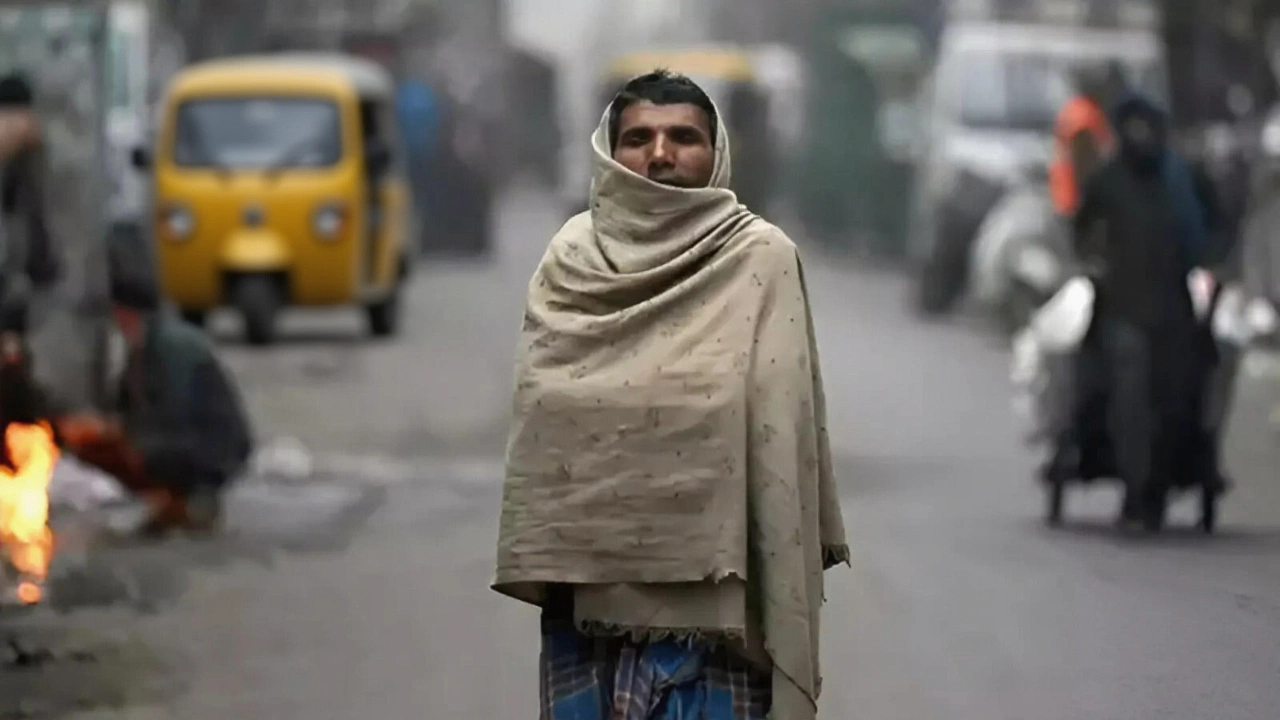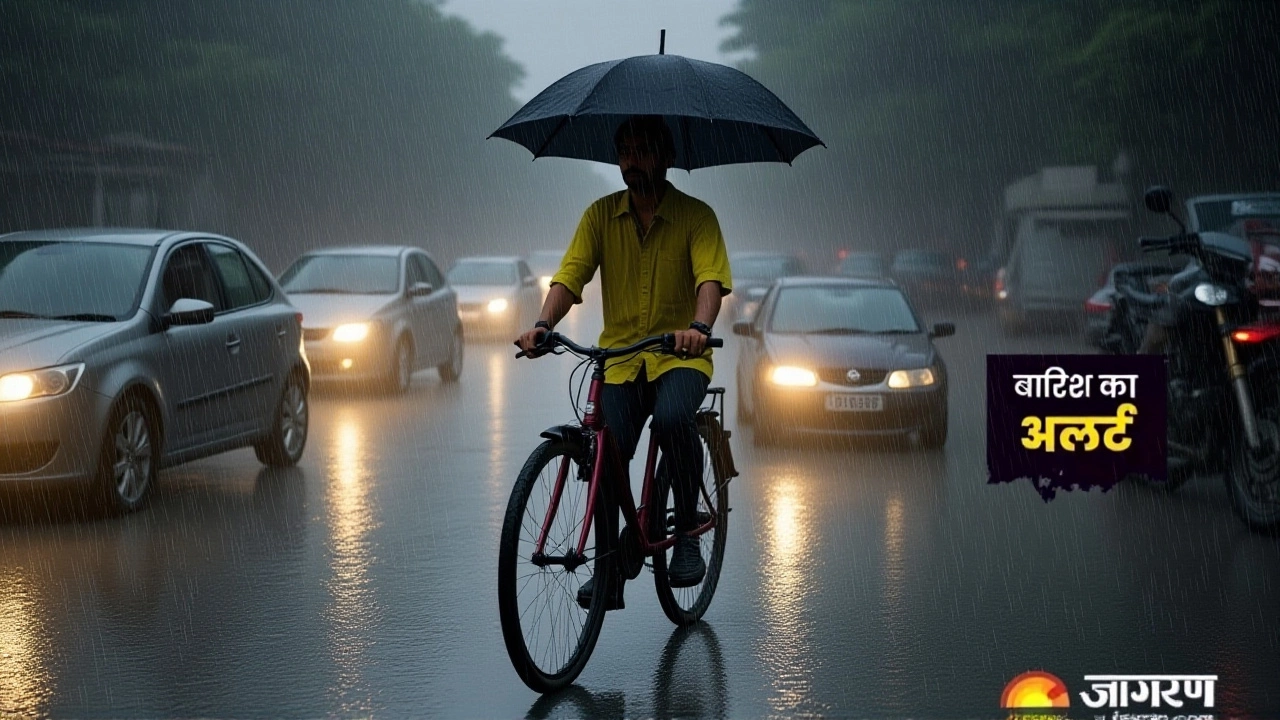October 2025 is shaping up to be an unusual month for Uttar Pradesh — not because it’s scorching, but because it’s surprisingly cool. While most long-range forecasts expected another sweltering post-monsoon stretch, EaseWeather.com is flagging a significant deviation: average temperatures of 31.5°C, a full -2.4°C below historical norms. That’s not just a slight chill — it’s enough to disrupt farming schedules, energy demand forecasts, and public health advisories across India’s most populous state.
Contradictory Forecasts, Consistent Risks
There’s no shortage of data. Weather25.com paints a picture of relentless heat: 29 dry days, just two rainy ones, and 37 mm of total rainfall. Daytime highs hover around 34°C, with 11.7 hours of sun daily. But Weather2Travel.com, using long-term data from the CRU (University of East Anglia) and the Met Office, sees Lucknow peaking at 33°C with only one rainy day and 24 mm of rain — and a UV index of 8, labeled "Very High." That’s not just uncomfortable — it’s dangerous without sunscreen, hats, or midday caution. The disconnect? EaseWeather.com says the entire state is running colder than usual. Their model, based on satellite trends and regional atmospheric pressure shifts, predicts October 2025 will be cooler than any of the last five years. Even AccuWeather’s day-by-day breakdown for Lucknow shows a cooling trend: highs of 96°F (35.6°C) on October 29 drop to 81°F (27.2°C) by October 31. That’s a 15-degree plunge in just two days.Temperature Rollercoaster: From 34°C to 16°C in Three Weeks
The real story isn’t the average — it’s the swing. Climate-Data.org pinpoints October 10, 2025, as the hottest day across Uttar Pradesh: 33.8°C (92.8°F). But then comes the plunge. By October 30, temperatures dip to 16.8°C — a drop of nearly 17°C in 20 days. In Ghaziabad, the coldest day hits 15.9°C on October 31. That’s not just a change in weather — it’s a seasonal shift compressed into a single month. Farmers in the Gangetic plains are already bracing. “We plant wheat in late October,” says Rajesh Kumar, a grain grower in Meerut. “If it’s too warm, the seeds don’t germinate right. If it’s too cold too soon, we risk frost damage later. This year? We don’t know what to expect.”
Why the Cooler Than Usual Forecast?
Meteorologists are scratching their heads. The monsoon withdrew on schedule in late September, but a strong high-pressure system over central India appears to be deflecting warmer air masses northward. “It’s not El Niño, not La Niña — it’s a regional anomaly,” explains Dr. Anjali Mehta, a climate researcher at the Indian Institute of Tropical Meteorology. “We’re seeing stronger westerly winds from the Arabian Sea than usual, pulling cooler air into the Indo-Gangetic Plain. It’s rare, but not unprecedented — similar patterns occurred in 2014 and 2019.” The implications ripple outward. Power utilities, which ramp up AC demand in October, may see lower-than-expected usage — a rare win for grid operators. But hospitals? They’re preparing for a spike in respiratory cases. “Sudden drops like this confuse the body,” says Dr. Priya Sharma of Lucknow’s King George Medical University. “Elderly patients with COPD or asthma often don’t realize they’re in danger until they’re gasping.”What Travelers and Residents Need to Know
Don’t be fooled by the word “cooler.” Even at 31.5°C, it’s still hot. And the UV index remains at 8 — high enough to burn skin in under 15 minutes. Weather25.com rightly advises: drink water, wear hats, avoid midday sun. But now, add a new warning: layer up at night. The rainfall pattern is equally deceptive. Two days of rain? Sounds minimal. But in a state where soil moisture is already low after the monsoon, even 37 mm can mean the difference between a viable rabi crop and a failed one. Farmers in Agra and Varanasi are being urged to delay irrigation until the first rain arrives — a gamble that could pay off or backfire.
What’s Next? Monitoring the Cold Front
The next 10 days will be critical. If the cool trend holds, October 2025 could become a case study in regional climate variability — not global warming, but localized atmospheric shifts with real human consequences. The India Meteorological Department is updating its models daily. Meanwhile, residents are being told to treat the month like a season within a season: hot days, chilly nights, unpredictable rain. One thing’s certain: this October won’t be like the last. And that’s exactly what makes it newsworthy.Frequently Asked Questions
Why is October 2025 cooler than usual in Uttar Pradesh?
A stronger-than-usual high-pressure system over central India is deflecting warm air masses northward, while enhanced westerly winds from the Arabian Sea are pulling cooler air into the Indo-Gangetic Plain. This rare atmospheric shift, similar to patterns seen in 2014 and 2019, is causing temperatures to average 2.4°C below seasonal norms, according to EaseWeather’s modeling.
How will this affect farmers planting winter crops?
Farmers in Uttar Pradesh rely on consistent October temperatures to plant wheat and mustard. A sudden drop below 18°C too early can delay germination, while prolonged warmth can trigger premature growth vulnerable to later frost. With temperatures swinging from 34°C to 16°C in weeks, crop yields could be 10–15% lower than average unless farmers adjust planting dates and irrigation timing.
Is the UV index really still dangerous if it’s cooler?
Absolutely. UV radiation is driven by sun angle and ozone levels, not air temperature. With a UV index of 8, skin can burn in under 15 minutes even on cloudy or breezy days. This remains a serious health risk for outdoor workers, children, and the elderly — regardless of whether it’s 30°C or 25°C outside.
How does this compare to past Octobers in Uttar Pradesh?
Over the last decade, October averages in Uttar Pradesh have ranged from 33.1°C to 34.5°C. This year’s predicted 31.5°C is the coolest since 2019, when a similar atmospheric pattern caused a 2.1°C drop. Rainfall is also below average — 37 mm vs. the 10-year mean of 52 mm — making this both cooler and drier than normal, a combination rarely seen together.
Should tourists plan differently for Uttar Pradesh in October 2025?
Yes. Pack light layers for daytime heat and a jacket for evenings — especially if visiting heritage sites like the Taj Mahal or Varanasi ghats, where temperatures drop sharply after sunset. Sunscreen and hydration remain essential, but carry a light shawl or sweater. The weather won’t be oppressive, but the sudden chill at night catches many off guard.
What’s the risk of rain disrupting travel or events?
The risk is low but not zero. With only 1–2 rainy days predicted, major events like Durga Puja or local fairs are unlikely to be canceled. However, rural roads may become slippery, and outdoor ceremonies could face delays. Short-term forecasts from Weather25.com suggest the rain, if it comes, will likely fall in brief afternoon showers — not prolonged downpours.
